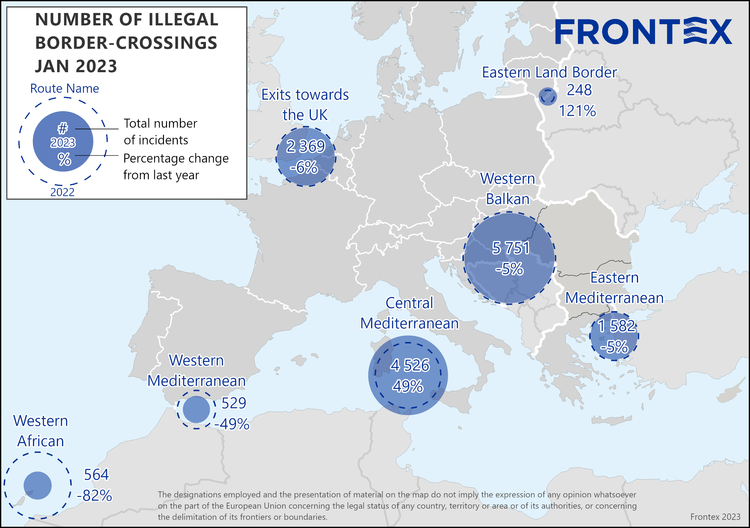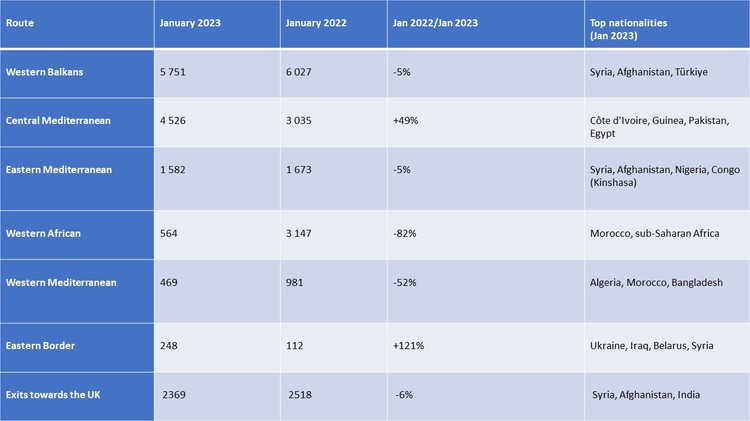The Western Balkans
route continued to account for the largest number of all the crossings
(43% of the total in January), although the situation compared with last
year remains largely unchanged (5% decrease year-on-year).
The Western African and the Western Mediterranean
routes saw the biggest drops in detections in the first month of the
year, 82% and 49% respectively, mainly due to harsh weather conditions
affecting departures.
Another reason for this decrease
is the increased patrolling and preventive activities implemented by
the non-EU countries, primarily Morocco. In the coming months,
deteriorating seasonal weather conditions in the Mediterranean will
continue to affect illegal border-crossing attempts leading to a
decrease in arrival numbers.
Meanwhile, the Central Mediterranean
route saw the largest increase of detected irregular migrants compared
to the same month of last year. The total number rose by half to 4 500.
Migrants on this route continue to depart from Tunisia, Libya and Türkiye.
Despite
the high number of arrivals, weather conditions significantly
influenced the number of incidents registered in the Central
Mediterranean. People smugglers exploited good weather to organise
departures.
Note: The preliminary data presented
in this statement refer to the number of detections of irregular
border-crossing at the external borders of the European Union. The same
person may cross the border several times in different locations at the
external border.
*The figure includes other less active migratory routes not mentioned in this press release. The final figures may be higher due to delayed reporting.

